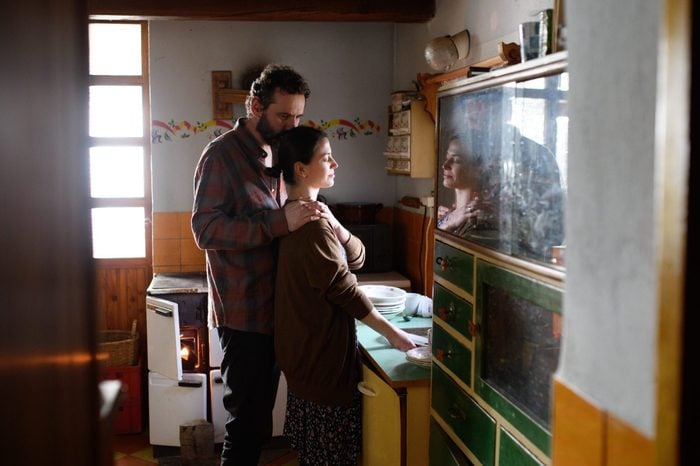What Is Trauma Bonding? What Therapists Want You to Know

Trauma bonding happens when you form an emotional bond with a physical or emotional abuser. Learn the signs of these toxic relationships and how to escape them.
At first, your partner seemed too good to be true, showering you with gifts and affection. Yet it has become increasingly apparent that something is wrong. The once-blissful relationship is now a roller coaster of emotion. Affectionate touches have become violent. Hurtful insults replace loving words.
Your partner apologizes. The fear you’ve overreacted becomes unbearable—after all, there are some great memories. This pattern is not the typical ups and downs of a healthy relationship. It’s the picture of a trauma bond, and it’s time you break free from this type of toxic relationship.
(Related: What Is Breadcrumbing? How to Spot This Red Flag in Relationships)
What is trauma bonding?
Trauma bonds form when a person experiences intense love and excitement followed by abuse, neglect, and mistreatment, according to the Complex Post-Traumatic Stress Disorder (CPTSD) Foundation. Inability to imagine a future without the abuser creates a feeling often mistaken for love or being trapped in the relationship. “A person’s sense of worth diminishes, and their self-esteem goes out the window,” says Shari Botwin, a licensed clinical social worker and author of Thriving After Trauma. “They feel like they won’t be able to make it in this world without this other person.”
A cycle of abuse
“The alternation of the honeymoon period with negative attention strengthens the trauma bond,” says Kaitlin Casassa, a licensed independent social worker and PhD student in social work at The Ohio State University. Working with sex-trafficking survivors, Casassa says this love-bombing includes gifts or affirmations of being the favorite, and it’s followed by abuse.
Experiencing trauma “together” makes the victim feel understood by the perpetrator. Feeling seen or adored repeats the cycle, sometimes in a new relationship. “People are drawn to similar unhealthy relationships due to the intense nature of a trauma bond,” says Sabra Cain, a licensed master social worker and call leader for the CPTSD Foundation. “It can affect someone’s sense of self and ability to see red flags in others.”
Why does a trauma bond form?
Humans naturally form bonds from a young age to survive. This need may turn into unhealthy dependency, however, allowing trauma bonds to develop with caretakers, romantic partners, or in other relationships. “Children bond with their parents because they require someone to put a roof over their head and food in their stomach,” Cain adds. “For adults in abuse situations, these can form due to a similar biological need of safety or even financial dependence.”
Holly Schiff, PsyD, a licensed clinical psychologist, says the collective trauma of the Covid-19 pandemic seemed to increase these bonds. Red flags went unnoticed in pandemic relationships because people needed others for emotional fulfillment. “In [this] trauma state, you are vulnerable, and in the case of developing a new relationship during this time, people might not be reinforcing the same boundaries that they usually would,” Schiff says. Unfortunately, sources of comfort can become sources of pain. By then, denial about the relationship may set in.
(Related: How to Get Your Confidence Back After a Breakup)
How trauma bonding affects the body
Botwin recalls a patient who froze whenever her phone lit up with a message from her ex. Consumed with fear, she couldn’t sleep, eat, or think. Frequent abuse can take a toll on the body. A traumatic incident may trigger a fight-or-flight response and surge of adrenaline and cortisol, for example, followed by a period of relative calm in the aftermath.
Apologies and physical affection can release chemicals in the brain that create feelings of comfort or pleasure, strengthening the feeling of connection with the abuser. Once the abuse returns, so do feelings of distress. Chronic stress and an overexposure to stress hormones can take a toll on the body, raising the risk for weight gain, heart problems, sleep issues, digestive problems, and more.
When to leave
Flowers and a quick apology from a partner won’t solve the problem. Seek out a therapist and pay attention in the sessions. Do not tolerate blame games, and make sure your partner is open to changes in the relationship. The abuser must acknowledge wrongdoings and take steps to get help, Botwin explains. If physical abuse is involved or the relationship drags down your mental health, Schiff adds, it is not worth staying.
Why it’s hard to leave
After recognizing mistreatment, it may still be difficult to exit the relationship. Coercive trauma bonding “creates environments where fear overrides decision-making capabilities,” says Patricia Speck, a nurse practitioner and professor of nursing at the University of Alabama at Birmingham.
Resisting abuse or leaving can cause more harm, while the instability of the trauma bond becomes a new normal. Ideas about a healthy relationship may seem boring, and people are left to wonder if there is something better out there.
(Related: 7 Reasons You Keep Thinking About Someone—and How to Stop)
Signs of trauma bonding
If you’re not sure whether you’re in a trauma bond, look out for some telltale symptoms that your relationship is toxic. If your relationship has any of the characteristics below, you might be in a trauma bond.
Extreme highs and lows
One night your partner showers you with compliments about your clothes. Feeling confident, you later wear the same outfit to hang out with friends only for your partner to call you “desperate for attention.” The dynamics of a trauma bond can leave a person feeling confused and inferior.
Power imbalance
A narcissist will hold things above partners to maintain power, creating an environment where you don’t have access to your needs. You feel in debt to abusers, with comments like, “How could you treat me like this when I give you everything?”
Becoming too serious, too fast
A month into the relationship, you and your partner move in together. Without family or friends in this new city, you are dependent on your partner. Advances in relationships can manipulate people into trauma bonds. “It seems like a whirlwind romance or love at first sight,” Schiff says. “The abuser uses this intensity to move things along quickly and hide what they don’t want you to know.”
Tarra Bates-Duford, PhD, a licensed marriage and family therapist in Raleigh, North Carolina, describes additional signs of trauma bonding:
- Knowing someone is bad for you but returning to the relationship anyway
- Excluding others from your life and relationship
- Constantly worrying about doing or saying upsetting things
- Consistently defending negative behavior
- Putting someone else’s happiness before your own
- Feeling undervalued or invisible in the relationship
- Viewing the abuser as a drug you are unable to live without
Breaking trauma bonds
Reassuringly, there are ways to overcome trauma bonds. It may take work, and it probably won’t be easy, but doing so may mean your safety and your mental and physical health.
Value actions, not words
“You don’t know how much I love you.” “You’re so important to me.” Botwin says her patients get these messages all the time. The gaslighting feels like the abuser is taking responsibility, but changes in behavior show real accountability. Don’t place value in empty promises, and be aware of treatment after apologies.
Set boundaries
Protect yourself by establishing boundaries. Try ignoring an abuser’s texts. It may seem hard at first, but seek out a therapist or trusted person to whom you can forward the message or communicate with instead of responding. If the bond is with a family member or a partner who shares your home, find power in saying “you need to stop,” or choosing not to engage with toxic behavior.
Speak positively to yourself
Hold on to the mentality that you are worthy of a love that isn’t painful. Build self-esteem by making a list of your positive qualities or things you deserve in a partner. Read this list aloud to feel more confident in it.
Release guilt
You are not responsible for someone else’s actions. Trauma bonds can happen to anyone. “It’s not a sign of weakness. It’s a normative adaptive response to a set of circumstances,” Casassa says. Give yourself time to grieve the loss of a relationship and heal without being too hard on yourself.
Find a health care provider
If you don’t have access to a therapist, Speck recommends seeking a health care provider. A nurse practitioner can use a routine checkup to check in with you, ensure you’re safe, and help you overcome negative situations, if needed.
Make a plan
The safety plan should include shelter, contact information for your supporters, and details about local organizations and services. Be sure to maintain security—this could mean having a backup location for shelter, changing home locks, changing your phone number, changing your work hours or location, or getting the authorities involved if you feel unsafe. If you’re dealing with physical abuse, you can find support and resources at the Ending Violence Association Canada.
Next: 7 Things Therapists Need You to Know About Relationship PTSD




